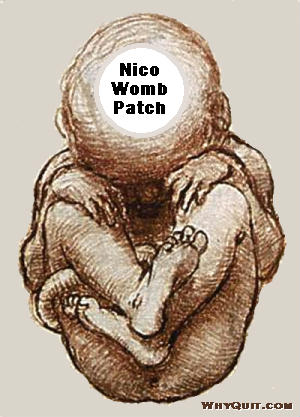
Critical Review: Nicotine for the fetus, the infant and the adolescent?
by K. H. Ginzel, MD, Gert S. Maritz, PhD, David F. Marks, PhD, Manfred Neuberger, MD, Jim R. Pauly, PhD, John R. Polito, JD, Rolf Schulte-Hermann, PhD, Theodore A. Slotkin, PhD
 For more than 20 years 'Nicotine Replacement Therapy' (NRT) for smoking cessation has been expanding with more forms of application and new indications for use. However, the evidence shows that long-term success has been weak or
altogether absent with high levels of relapse to smoking. Indefinite continuing
use of NRT has been deemed preferable to continued smoking. Last year, the
National Health Service in the UK extended the use of NRT to pregnancy, to
children from age twelve, and advocated NRT use even while still smoking.
Similar trends are discernible in the US and Europe. In light of this growing
emphasis on NRT, nicotine had to be made palatable by playing down or even
denying its toxicity and declaring it "as innocent as caffeine."
For more than 20 years 'Nicotine Replacement Therapy' (NRT) for smoking cessation has been expanding with more forms of application and new indications for use. However, the evidence shows that long-term success has been weak or
altogether absent with high levels of relapse to smoking. Indefinite continuing
use of NRT has been deemed preferable to continued smoking. Last year, the
National Health Service in the UK extended the use of NRT to pregnancy, to
children from age twelve, and advocated NRT use even while still smoking.
Similar trends are discernible in the US and Europe. In light of this growing
emphasis on NRT, nicotine had to be made palatable by playing down or even
denying its toxicity and declaring it "as innocent as caffeine."
This Critical Review, published in the Journal of Health Psychology takes issue with the grave risk of this irresponsible policy especially for the newly added target population. Nicotine interacts with the very basic functions of the peripheral and central nervous system, i.e., the nerves supplying organs and tissues of the body and the vital command stations in the brain. When these systems are formed during fetal life, nicotine from the mother exposed to smoking, secondhand smoke, or NRT can critically impair their normal development.
Perinatal nicotine exposure has been implicated in 'Sudden Infant Death Syndrome' (SIDS), in 'Attention Deficit Hyperactivity Disorder' (ADHD), in affective and behavioral problems, cognitive and learning deficits, depression and nicotine addiction in adolescence.
In the amounts ingested from smoking or NRT, nicotine also plays a prominent role in tobacco-related carcinogenesis, in the incidence of cardiovascular disease, pulmonary emphysema, kidney disease, stomach and duodenal ulcers, and macula degeneration.
Tobacco control must be nicotine control. Without nicotine control, nicotine addiction and nicotine's multifarious impact on the user would persist and spread at the peril of the unborn, the next generation, and public health in general.
Pregnant? Ready to quit?
Read FFN-TJH, Chapter 6, Pages 56-69
Critical Review links:
- Full Text - March, 2007
- Journal of Health Psychology - Abstract
- PubMed Citation Abstract
Authors:
- K.H. Ginzel, MD, Westhampton, Massachusetts, USA
- Theodore A. Slotkin, PhD, Duke University Medical Center, USA
- David Marks, PhD, City University, London, UK
- Manfred Neuberger, MD, Medical University of Vienna, Austria
- John R. Polito, Editor of WhyQuit, SC USA
UK NRT Pregnancy & Adolescent Use Policy Change Documents:
- ASH London's December 2005 "Guidance" on "Nicotine Replacement Therapy
- November 2005 Committee on the Safety of Medicines NRT Patient Leaflet
- November 2005 Questions & Answers by Committee on the Safety of Medicines
- November 2005 Commission on Human Medicine's sample letter to health professionals
U.S. NRT Use Policy Change Concerns:
- Nicotine Fix - Behind Antismoking Policy, Influence of Drug Industry - A February 8, 2007 front page article in the Wall Street Journal by Pulitzer Prize winning journalist Kevin Helliker reviews how NRT has not proven effective in real-world use yet leadership at the U.S. Agency for Healthcare Research and Quality is allowing a number of experts with financial ties to pharamaceutical industry smoking cessation products to hold positions on an expert panel that is currently engaged in rewriting U.S. cessation policy, including the panel's chairman.

